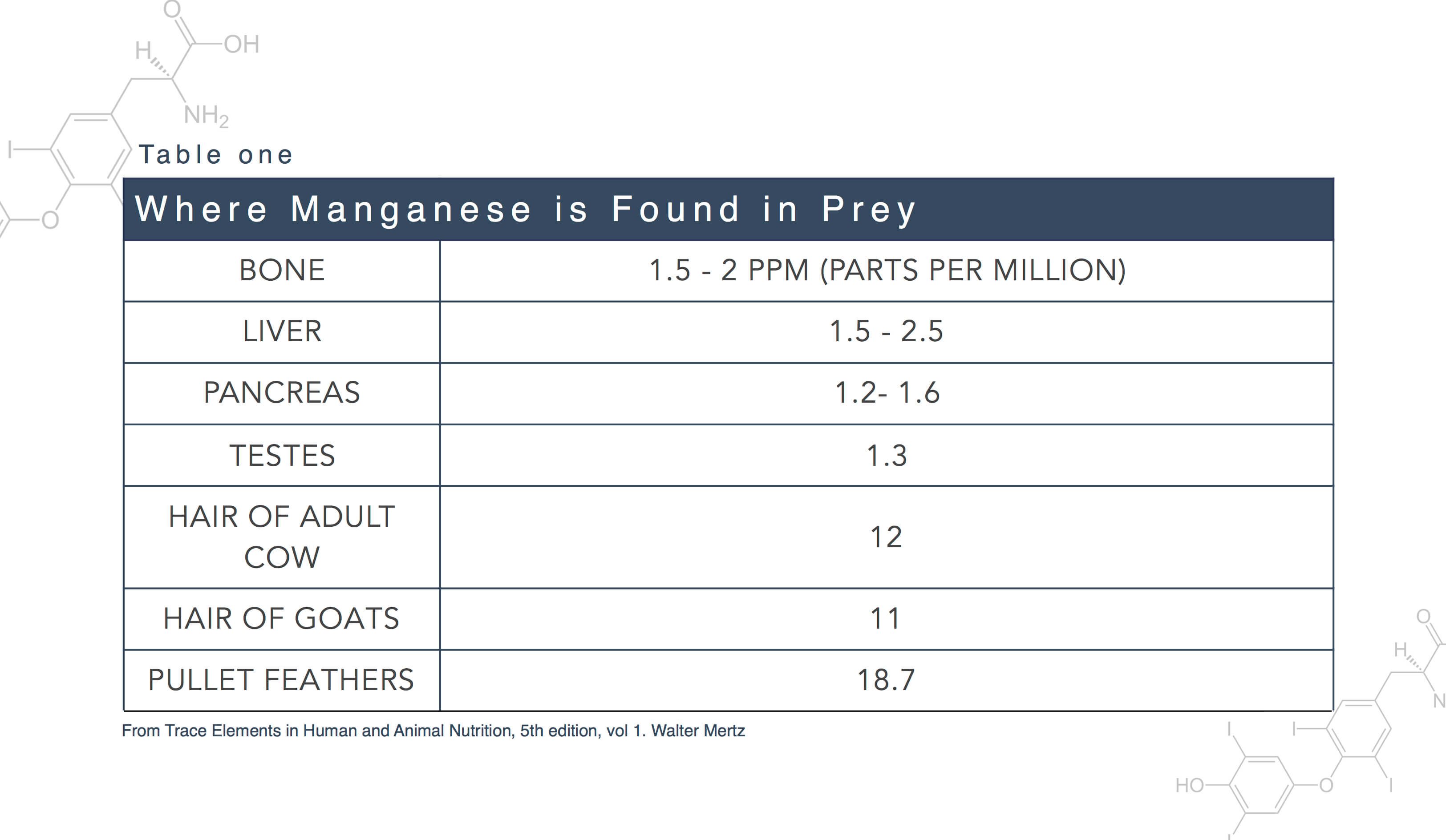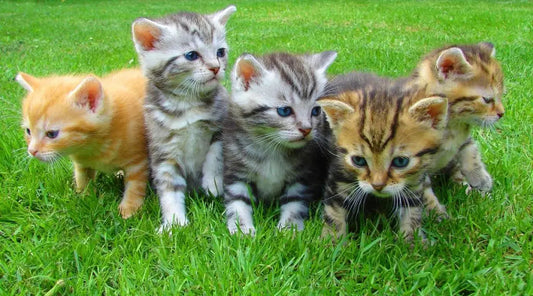
Manganese in Your Pet's Diet
Written by Steve Brown
Manganese (Mn)
Manganese (Mn) is a trace mineral, required in small amounts measured in parts per million, that is necessary for the health of all animals, including being vital for development, metabolism, and the antioxidant system. Lack of manganese may create health problems such as:
- Abnormal blood clotting
- Abnormal sex hormone production
- Reduced calcium absorption
- Poor blood sugar regulation and metabolic health
- Nerve deficits
- Connective tissue dysfunction
- ACL tears
I am starting this series with manganese because almost all homemade and prey model diets, and many commercial raw diets, are deficient in manganese. The reason is that the ancestral dog consumed the entire small prey animal, the whole rat, mouse, or bird, which included manganese-rich parts. These parts are now difficult for commercial manufacturers and homemade recipe makers to get and use, Table 1.

Standards: on a caloric basis, adult dogs require 1.25 and puppies 1.8 mg of Mn per 1000 kcal; cats and kittens 1.9. A typical 40-pound dog consumes 1000 kcal per day, see what is 1000 kcal below. On a dry matter basis (and we must use a caloric basis for meat-based diets), the minimum for puppies is 7.2 ppm.
Commercial, Prey Model, and Homemade Raw Dog Food
Unlike commercially produced pet food, homemade or prey model diets contain the whole prey animal, including the hair, wool, and feathers, (which is not possible when using all human-grade standards) one must add manganese-rich ingredients. Look for commercial-made raw foods, and don’t see manganese supplements on the label, look for one of the foods at the top of table 2. If you don’t see one, write and ask the manufacturer the source and amounts of Mn in their foods.
Prey model and homemade recipe feeders, note how little manganese is contained in meats, even in liver.
Adult dog food makers who use lean meats, and some vegetables, add ¼ mg of Mn per 1000 kcal (if no vegetables add 1 mg). For puppies add 1 – 1 ¾ mg; cats and kittens add 1 ½ mg of Mn per 1000 kcal to at least reach the AAFCO minimum suggested amounts, which are still far below ancestral amounts.
Foods to Add for Manganese
Try to add foods with the most Mn per calorie. Manganese is one of 7 essential nutrients that we worry about when making meat-based diets. We want to provide these nutrients with whole foods, but not add a lot of calories, throwing the diet further out of balance. Therefore, we need to solve each nutrient with foods providing the most nutrient per calorie. This is especially important for fat dogs and cats.
What is 1,000 kcal (Calories)?
kcal = kilocalories = Calorie
The number of Calories a typical 40-pound dog consumes in one day
1000 kcal of ground beef, raw
93% lean, 1 pound, 8.5 oz. (703 grams)
90% lean, 1 pound, 5 oz. (600g)
85% lean, 1 pound, 1 oz. (482g)
70% lean, 2/3 pound (300g)
Typical vegetable, raw
12 pounds
My typical recipes, with 13% vegetables
1.5 – 1.6 pounds
Blue mussels are an excellent source of manganese, but they’re often expensive and hard to find. Some spices (just add a pinch), some green vegetables, especially spinach, and brans, such as rice bran, are manganese-rich. (Darwin’s believes that most dogs do best on grain-free diets). Another option is to use a manganese supplement. But be careful with supplements, we usually want to add 1 – 2 mg of Mn per 1000 kcal (and most supplements are 10 mg are more per tablet.

Table 2: Manganese content of selected foods from most to least, mg per 1000 kcals; the amount of that food needed for 1 mg of Mn; and the number of calories added with that 1 mg of Mn. Note that the manganese content, like the iodine content, of kelp varies. Check with the manufacturer/supplier to get specific data. Otherwise, use USDA data for kelp.


